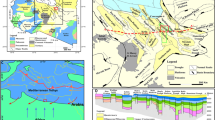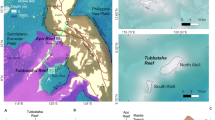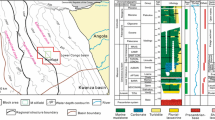Abstract.
The sub-bottom architecture of the Sunda Shelf has been investigated by shallow-seismic Parasound surveying. Seven seismic facies and three different types of bounding surfaces are distinguished. Regressive deposits predominate, either as thick and laterally extended units or as locally restricted depression fills. These relief-leveling units are bound by widespread erosional surfaces (sequence boundaries). By contrast, local channel incision strongly modifies the paleophysiography and enables the preservation of successive transgressive deposits. Correlation with the global sea-level curve has provided the age frame within which the units and surfaces of the past three 100-ka sea-level cycles have been identified.
Similar content being viewed by others
Author information
Authors and Affiliations
Additional information
Electronic Publication
Rights and permissions
About this article
Cite this article
Hanebuth, T.J., Stattegger, K. & Saito, Y. The stratigraphic architecture of the central Sunda Shelf (SE Asia) recorded by shallow-seismic surveying. Geo-Mar Lett 22, 86–94 (2002). https://doi.org/10.1007/s00367-002-0102-1
Received:
Accepted:
Issue Date:
DOI: https://doi.org/10.1007/s00367-002-0102-1




